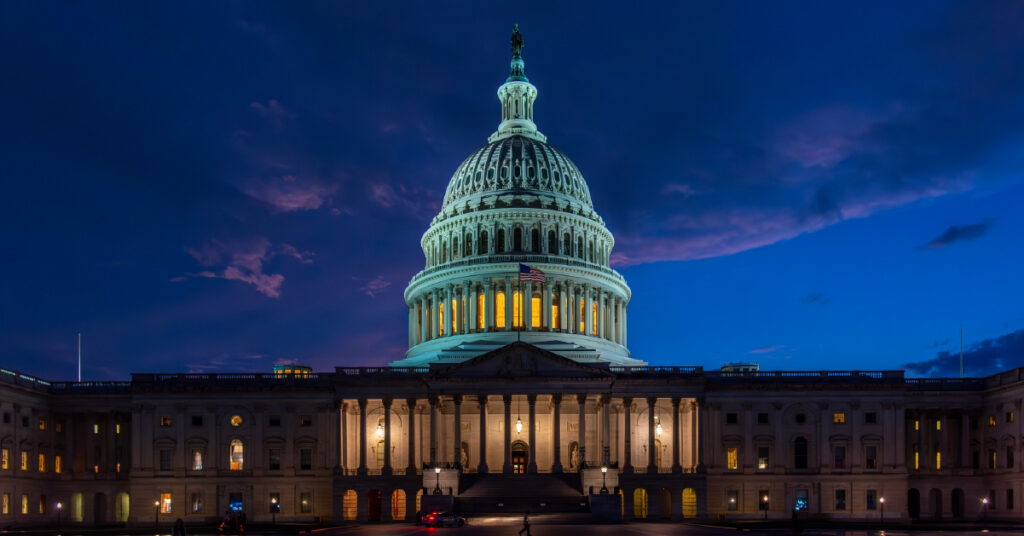Updated July 6, 2025
The tax and spending legislation signed on Friday by President Trump will create an unprecedented, dollar-for-dollar federal tax credit designed to support private and religious K-12 schools. The credit will fully reimburse donors for the first $1,700 they give to groups that hand out tuition vouchers to attend private schools. There is no other cause—not children’s hospitals, veterans’ groups, or disaster relief—that taxpayers can contribute to and see the entire cost of their contribution bankrolled by the federal government.
The tax policy design of the new law’s voucher program is dramatically different from the one passed earlier by the House. For one thing, using the credit as a means of avoiding capital gains tax is not possible under the final version of the plan. But from the perspective of the federal budget, the most significant difference is that the final bill discards the budgetary safeguard included in the House version that limited total tax credit payouts to around $5 billion per year.
The lack of an aggregate cap on the tax credit creates the possibility that this policy could carry an immense price tag. The most significant restrictions on the tax credit are that the taxpayer must have tax liability against which to claim the credit, and that the credit cannot exceed $1,700 per taxpayer. For married couples, the maximum credit is likely to be $3,400, though this is not specifically stated in the bill.
The universe of taxpayers meeting these criteria is large.
Our analysis of IRS data suggests that more than 138 million people could make full use of this credit in 2027 if they wished. In practice, most of those people will not contribute both because of the paperwork involved and, more fundamentally, because private school vouchers are unpopular with the public.
Last year voters in Colorado, Kentucky, and Nebraska all rejected private school vouchers at the ballot box by margins of 49-51, 43-57, and 35-65 percent, respectively. As a very rough exercise, if we assume that 43 percent of taxpayers might be interested in the idea of private school vouchers (in line with Nebraska’s result from last year, which was the median state among this group), then that suggests that 59 million eligible taxpayers might be interested in claiming the Senate’s voucher tax credit.
If all 59 million taxpayers chose to claim the credit, the cost to the federal government would be $101 billion per year—making it one of the largest tax cuts in the entire bill. In practice, of course, some of those 59 million people will not contribute either because they are unaware of the program or because they do not care enough about vouchers to bother filling out the paperwork involved in contributing to a private school group and claiming a 100 percent reimbursement for that contribution.
Ultimately, the true cost of the program will be determined in large part by how effective the private schools and their proponents are in encouraging voucher supporters to contribute. It is likely that the DeVos family, for instance, will invest considerable resources into raising awareness of this tax credit. It is also possible that a cottage industry focused on securing additional donations in return for a finder’s fee could crop up.
If private schools and their backers convince half of voucher supporters to contribute, the cost to the federal government would be nearly $51 billion per year. If they are less successful and only manage to convince a quarter of voucher supporters that the paperwork involved in claiming the credit is worth the hassle, then the cost would be more than $25 billion per year. Even if just 5 million supporters donate—a total that seems very attainable given that 4.7 million children are already enrolled in private K-12 schools—the total cost would be more than $8 billion per year.
Official estimates released by Congress’s Joint Committee on Taxation place the revenue cost at around $3 to $4 billion per year, with costs rising over time as more families get into the habit of using this tax credit. Those revenue estimates imply that there will be around 1.8 to 2.6 million donors per year. But there is considerable uncertainty in these estimates and, as the calculations above make clear, there is a real risk of a major cost overrun in this program.
The House version of this credit, by contrast, can be confidently predicted to cost about $5 to $6 billion per year because of the cap on its overall size. And despite all its flaws, the House version also has the virtue of being a temporary experiment, whereas the final version creates a permanent drain on federal coffers.
Ultimately, the Senate and the President chose a far riskier path than the House when it comes to the overall cost of this program. It is clear that this tax credit has the potential to come with an enormous cost if private school groups are successful in convincing their supporters to participate. In these times of very high debt and deficits, this is reason for all of us to be uneasy.





